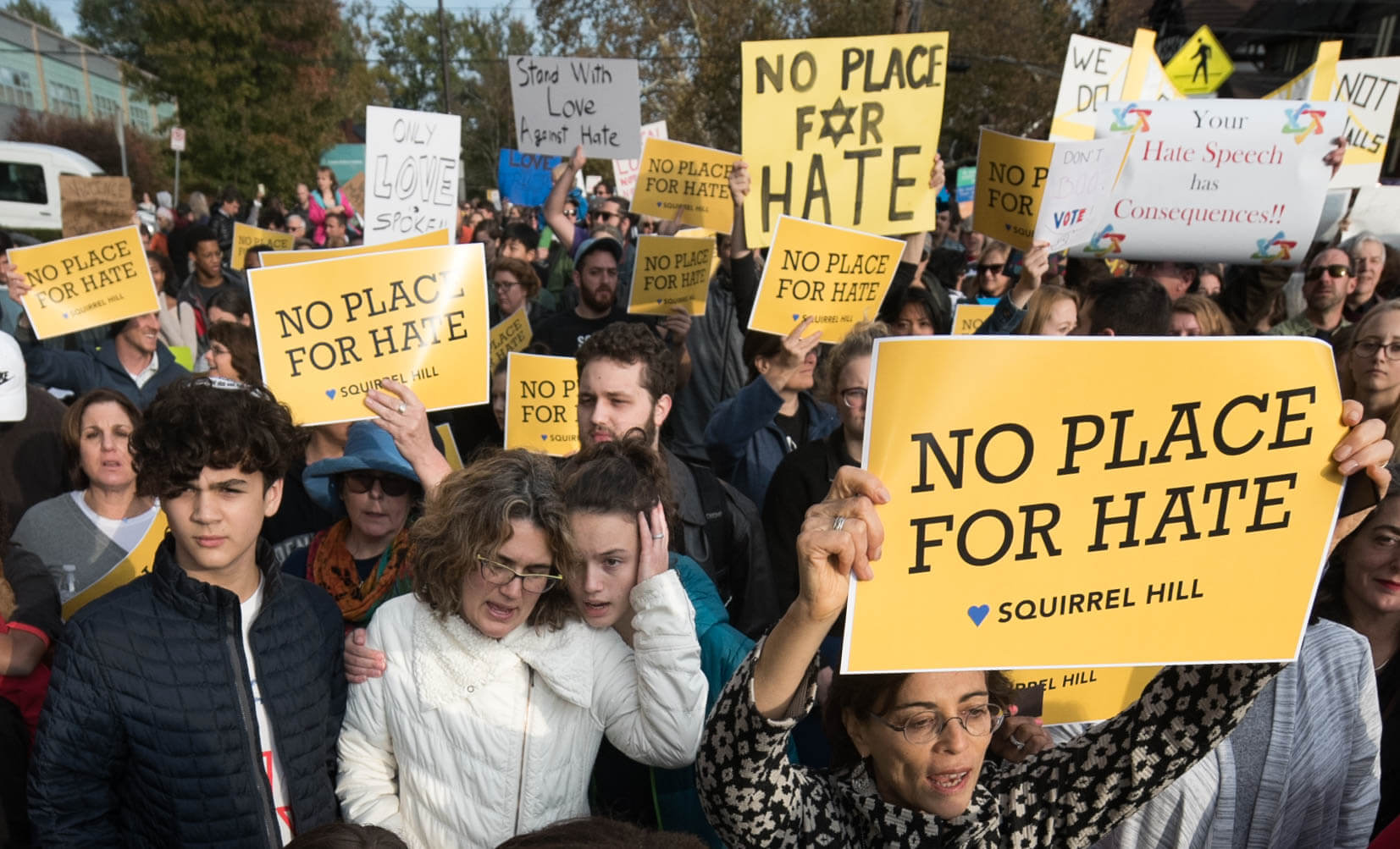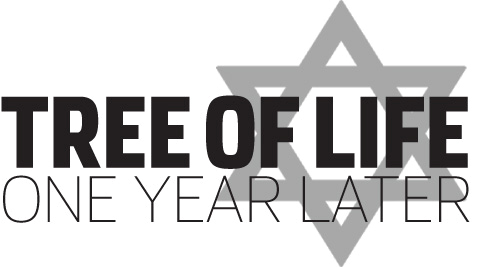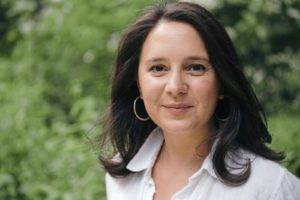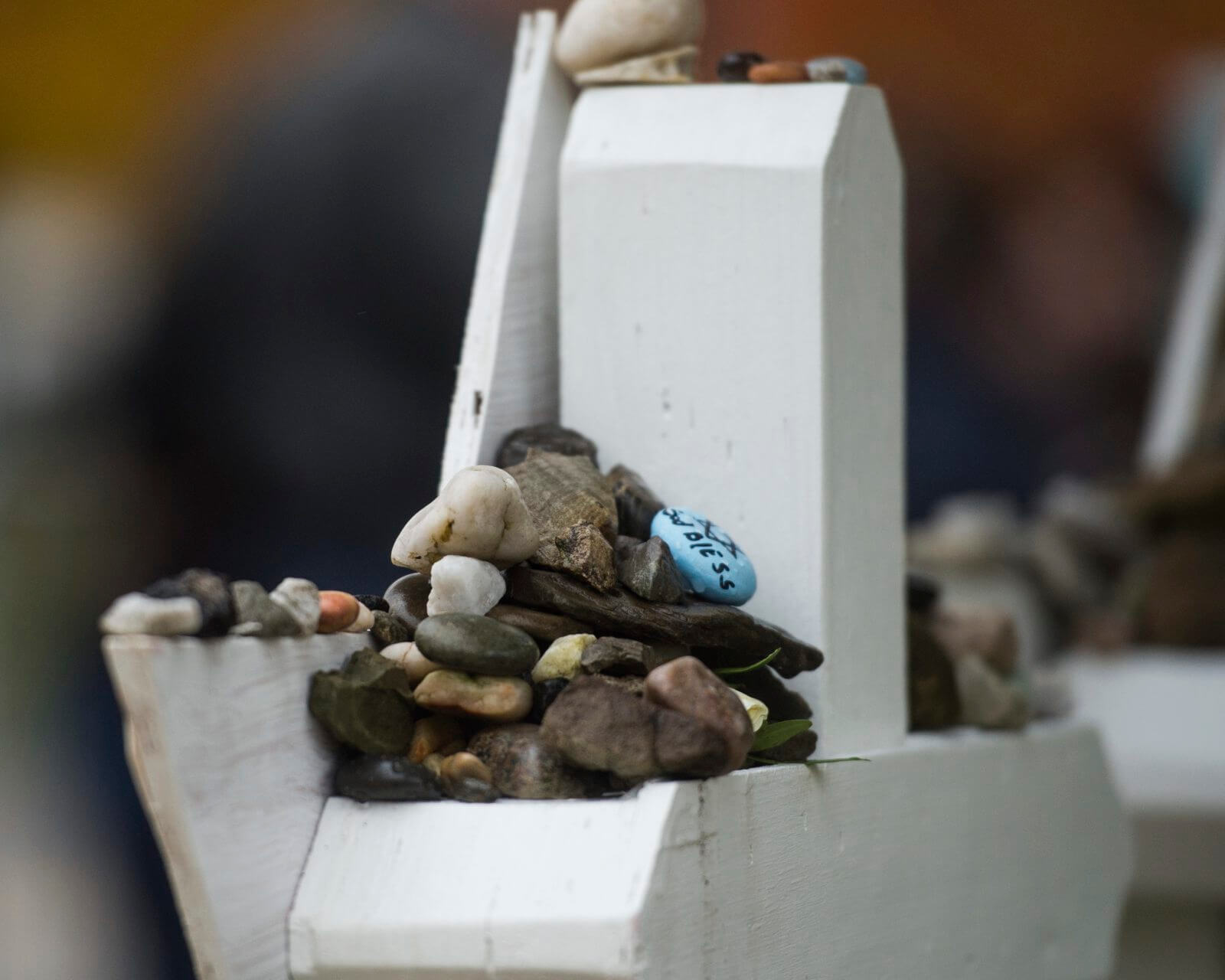

By Stephen Huba
Bari Weiss was in Arizona when she heard about an anti-Semitic attack in her beloved Squirrel Hill.
The details were sketchy at first, but it soon became apparent that a shooter had killed 11 people in the Tree of Life synagogue where she had celebrated her bat mitzvah 21 years earlier.
 “The first text came through our family chat at 10:22 a.m. It was from my baby sister, Suzy. I typed back immediately: ‘Is dad.’
“The first text came through our family chat at 10:22 a.m. It was from my baby sister, Suzy. I typed back immediately: ‘Is dad.’
“My mouth turned to cotton as I waited for a response to my incomplete question,” Weiss writes in her new book “How to Fight Anti-Semitism.”
“My parents live a mile and a half from the Tree of Life synagogue. Three congregations meet in the building for Shabbat morning services; my dad is sometimes at one of them.
“‘We’re home,’ my mom wrote.” The rest of the message was garbled but understood: “ ‘do t worry.’ ”
Weiss, an editor and writer for the New York Times opinion section, was on a plane to Pittsburgh the following day.
She has spent the past year asking herself the same question as many other American Jews: How could the worst anti-Semitic attack in U.S. history happen in Pittsburgh? In 2018? How could it happen at all?
Weiss’ answer, outlined in her book, is that anti-Semitism, although an ancient hatred, is surging as a form of white supremacy on the far right — and a form of anti-Zionism and anti-Israel activism on the far left.
The Tree of Life massacre, she said in a recent interview, is not an isolated event but part of a disturbing trend toward greater acceptance of anti-Semitic rhetoric and actions in American public life.

Bari Weiss
“What I’m hoping to do most is to give people the language to talk about what they’re experiencing but who maybe lack the right framework to understand it,” she said.
Weiss, 35, a 2002 graduate of Shady Side Academy, defines anti-Semitism as an “ever-morphing conspiracy theory” that thrives in the fever swamps of the far right and the far left. In the case of the Tree of Life shooter, his online statements clearly put him in the white-supremacist camp, she said.
“I’m trying to offer a framework for understanding anti-Semitism. With (Robert) Bowers, he very much is expressing the anti-Semitism of the far right, in that he sees the Jews as the linchpin of white supremacy,” she said.
“Because many Jews can pass as whites, white supremacists see them as the ultimate betrayers of the white race” through their historic support for the rights of minorities, immigrants and other marginalized people, she said.
Bowers directed his ire at the Hebrew Immigrant Aid Society (HIAS) because of a belief that its work on behalf of Jews and non-Jews would ultimately lead to the “replacement” of whites, she said. Authorities believe Bowers targeted the Tree of Life synagogue because one of the three congregations that worship there, Dor Hadash, had supported a National Refugee Shabbat sponsored by HIAS in October 2018.
“The anti-Semitism of white supremacy sees the Jews as a critical handmaid of the people they see as subhuman — blacks, Muslims, immigrants,” she said.
RELATED: A year after Tree of Life shooting, the city still grieves but remains resolute
Weiss said it’s important to distinguish between racism and the anti-Semitism of white supremacists.
“Racists perceive themselves as punching down; white supremacists perceive themselves as punching up,” she said. “In the eyes of the racist, the person of color is inferior. … In the eyes of the anti-Semite, the Jew is — everything. He is whatever the anti-Semite needs him to be.”
Replacement theory explains a lot of the anti-Semitism on the far right — from the Charlottesville “Unite the Right” rally in 2017 to the Tree of Life shooting, said James Paharik, director of the National Catholic Center for Holocaust Education at Seton Hill University in Greensburg.
“Anti-Semitism is a deep vein across all sectors of white supremacy for the last century or century and a half.”
- Kathleen Blee, dean of the Kenneth P. Dietrich School of Arts & Sciences at the University of Pittsburgh and member of Dor Hadash congregation“According to that theory, there is a plan to replace white Christians in this country with Jews and people of color, immigrants. They think there is some kind of conspiracy to undermine the white Christian domination of the United States. They think Jews are behind it,” Paharik said.
Such theories often gain traction during times of economic upheaval. But the current rise in anti-Semitic incidents comes at a time of economic prosperity, he said.
“Right now, it’s more of a cultural thing than an economic thing. I have to admit, it took me by surprise,” Paharik said. “I was surprised at how much of a chord it struck. Historically, this happens when people are fearful of losing their jobs.”
RELATED: One year later: The path to recovery after the Tree of Life attack
The cultural roots of the anti-Semitism of white supremacy are in the 1920s, when Jews, Catholics and immigrants from eastern and southern Europe were the targets of the Ku Klux Klan and other xenophobic groups, Paharik said.
Today, it is immigration from Muslims and Hispanics that is feared — and for which Jews are blamed. “Somehow, it always seems to happen — (Jews) always seem to be part of the mix,” he said.

Insofar as white supremacists define themselves as Christian, it is a corrupted form of Christianity, Paharik said. Most Christian churches have removed the taint of anti-Judaism and anti-Semitism from their teachings, he said.
That is not the case with Islam. “In the Muslim world, there’s a tremendous amount of anti-Judaism and anti-Semitism,” Paharik said, noting that much of it centers on the state of Israel.
“We don’t see that so much here — the hatred of Israel — which has certainly spurred violence in many parts of the world,” he said.
Weiss addresses the anti-Semitism of the Arab world in her chapter “Radical Islam.”
RELATED: Tree of Life leaders vow to reopen synagogue
Anti-Semitism historically has been a feature of white supremacist movements in the United States since at least the 1920s, said Kathleen Blee, dean of the Kenneth P. Dietrich School of Arts & Sciences at the University of Pittsburgh.
“They consider Jews to be non-white, meaning non-Aryan. They often think about Jews as creating racial division and stirring up racial conflict for the benefit of Jewish elites,” said Blee, who is a member of Dor Hadash. “Anti-Semitism is a deep vein across all sectors of white supremacy for the last century or century and a half.”
Although she has not studied the Bowers case in detail, Blee has devoted much of her academic career to the study of white supremacist movements in the United States from the 1920s to the present.
Like Weiss, Blee does not see the Tree of Life shooting as an isolated incident. There were incidents that preceded and followed it, including the Chabad of Poway synagogue shooting in California in April, which killed one and injured three. The suspect, a 19-year-old male, cited the Pittsburgh shooter as inspiration in a rabidly anti-Semitic and racist text posted on the internet.
The Oct. 9 attack at a synagogue in the east German town of Halle followed a similar pattern. On Yom Kippur, Judaism’s holiest day, an armed man tried to enter a synagogue with more than 50 worshippers inside. Thwarted by a locked door, he turned to the streets and killed two people. In a screed he published online just before the attack, he wrote, “If I fail and die but kill a single Jew, it was worth it. … After all, if every White Man kills just one, we win.” The shooter, a 27-year-old man who lived nearby, was captured by police.
“The shooting in Pittsburgh was based on the shooter’s immersion in the online world of white supremacy that glorified violence against the supposed enemies of the white race,” Blee said, “and the Tree of Life shooting appears all over the white supremacist online community discussions as a model of successfully attacking Jews. It’s absolutely not an isolated incident.”
Blee said such attacks follow a familiar pattern, starting with the targeting of Jews as a threat. Next is the assertion that Jews are an immediate threat. Finally, violence is chosen as the means to put down the threat.
“That’s a dangerous pattern that we’re in right now that’s contributing to this uptick of violent action by white supremacists,” she said.
RELATED: Tree of Life shooting has shaken Squirrel Hill, but residents insist the community will prevail
While the number of violent white supremacists in the United States is tiny, their effectiveness is exaggerated through the instantaneous communication of online communities and easy access to “weapons of mass destruction,” she said.
One of the things that’s new about the anti-Semitism of this moment is the way technology facilitates attacks like the ones in Pittsburgh and Poway, said Jacob Labendz, director of the Center for Judaic and Holocaust Studies at Youngstown State University.
Labendz said it’s “mistaken and dangerous” to consider the Tree of Life shooting an isolated attack.
“We have the record and proof that (Bowers) was part of a diffuse online community that goads each other into such violence and that celebrates these sorts of attacks,” he said.
In some ways, the internet has given anti-Semitism a new lease on life.
“The most important questions we can ask ourselves is what is this anti-Semitism doing right now,” he said. “Why is it compelling to people, why does it make sense to them and what does adopting this ridiculous conspiracist worldview allow people to do?”
What: Panel discussion sponsored by the National Catholic Center for Holocaust Education
Who: Greensburg Bishop Edward C. Malesic; Lauren Apter Bairnsfather, director, Holocaust Center of Pittsburgh; Laurie Fox, coordinator, Seton Hill University Music Therapy Program; Rabbi Sara Perman, rabbi emerita, Congregation Emanu-El Israel, Greensburg
Where: Cecilian Hall, Seton Hill University, Greensburg
When: 7:30 p.m. Oct. 30
Who: Bari Weiss, author of “How to Fight Anti-Semitism,” in conversation with Mark Nordenberg, chancellor emeritus of the University of Pittsburgh.
Where: Chatham University Campbell Memorial Chapel, 1 Woodland Road, Pittsburgh, PA 15232
When: 7 p.m. Nov. 4. Book signing to follow.
How to register: Go to eventbrite.com, search for “Bari Weiss.” Tickets are free.